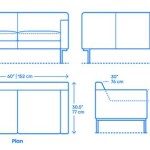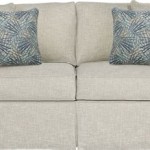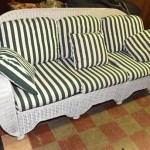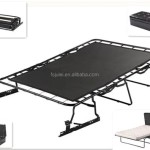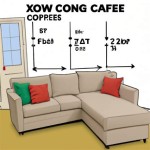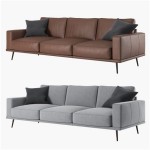Bernhardt Furniture Leather Sofa Reviews: A Detailed Examination
Bernhardt Furniture has maintained a longstanding reputation for producing high-quality furniture, and their leather sofas are often regarded as a focal point of their collections. Selecting a sofa is a significant investment, and understanding the nuances of Bernhardt's leather offerings can aid consumers in making informed decisions. This article will provide a detailed examination of Bernhardt Furniture leather sofas, focusing on key elements such as leather quality, construction, design aesthetics, and overall value. By analyzing these aspects, potential buyers can gain a comprehensive understanding of what to expect from a Bernhardt leather sofa and determine if it aligns with their needs and preferences.
Leather Quality and Types
The leather used in Bernhardt sofas is a critical factor influencing the overall quality, durability, and aesthetic appeal. Bernhardt typically utilizes various types of leather, each offering unique characteristics. Understanding these leather types allows consumers to match their lifestyle and aesthetic preferences with the appropriate option. Some common leather types found in Bernhardt sofas include top-grain leather, full-grain leather, and corrected-grain leather. Top-grain leather is generally considered a high-quality option, offering a balance of durability and suppleness. It retains some of the natural markings and grains of the hide, providing a distinctive and luxurious feel. Full-grain leather represents the highest quality, using the entire grain of the hide, which is known for its exceptional durability and the development of a rich patina over time. Corrected-grain leather, on the other hand, undergoes a process of buffing and sanding to remove imperfections, resulting in a more uniform appearance. This process often involves applying a protective coating, which can enhance stain resistance but may also affect the leather's natural feel.
The sourcing of the leather is another important consideration. Bernhardt often partners with reputable tanneries known for their ethical and sustainable practices. Examining the origin and tanning process can provide insight into the longevity and environmental impact of the leather. Leather sourced from reputable tanneries is more likely to be free from harmful chemicals and processed using methods that minimize environmental damage. Furthermore, the tanning process itself influences the leather's final characteristics. Vegetable-tanned leather, for example, uses natural tannins derived from plants, resulting in a leather with a unique color and texture that evolves beautifully over time. Chrome-tanned leather, on the other hand, utilizes chromium salts, offering a faster and more consistent tanning process. The choice between different tanning processes ultimately depends on the desired aesthetic and performance characteristics.
Beyond the type of leather, the finish is a crucial determinant of its appearance and performance. Aniline leather retains the leather's natural surface and markings, offering a soft and luxurious feel. Semi-aniline leather features a light protective coating, enhancing its stain resistance while preserving some of the natural beauty. Protected leather incorporates a more substantial coating, providing superior stain and scratch resistance, making it a practical choice for households with children or pets. The finish also influences the ease of maintenance. Aniline leather requires more careful cleaning and conditioning to prevent staining and drying. Semi-aniline and protected leathers, however, are generally easier to clean and maintain, making them more suitable for everyday use.
Construction and Frame Durability
The structural integrity of a sofa is paramount to its long-term durability and comfort. Bernhardt Furniture typically employs robust construction techniques to ensure that their sofas can withstand regular use. The frame material is a primary factor in determining the sofa's stability and longevity. Hardwood frames, such as kiln-dried hardwoods, are preferred for their strength and resistance to warping. Kiln-drying removes moisture from the wood, preventing it from shrinking or expanding over time, which can compromise the sofa's structure. Softwood frames, while less expensive, are generally less durable and may be more prone to damage.
The joinery methods used to assemble the frame are equally important. Corner-blocked frames, where wooden blocks are glued and screwed into the corners, provide added stability. Dovetailed joints, which interlock the wood pieces, are known for their exceptional strength. Mortise-and-tenon joints, where one piece of wood is inserted into a matching hole in another, offer a durable and timeless connection. The presence of these joinery techniques indicates a higher level of craftsmanship and attention to detail.
The suspension system also plays a crucial role in the comfort and support of the sofa. Eight-way hand-tied springs are considered the gold standard in sofa construction, providing even weight distribution and exceptional support. This system involves individually tying each spring to the frame and to adjacent springs, creating a cohesive and responsive seating surface. Sinuous springs, also known as "S" springs, are a more common and cost-effective alternative. These springs are pre-assembled and attached to the frame, offering good support and resilience. Webbing systems, which use interwoven bands of fabric or rubber, can provide adequate support, but they may be less durable than spring systems. The choice of suspension system influences the overall comfort and lifespan of the sofa.
The cushioning materials also contribute significantly to the sofa's comfort. High-density foam offers excellent support and retains its shape over time. Down-blend cushions, which combine down feathers with foam or fiber, provide a luxurious and plush feel. Fiber-filled cushions are a more affordable option, but they may require more frequent fluffing to maintain their shape. The density and resilience of the cushioning materials directly affect the sofa's comfort level and its ability to resist sagging and compression.
Design Aesthetics and Styles
Bernhardt Furniture offers a diverse range of design styles in their leather sofa collections, catering to various aesthetic preferences. Understanding the different styles and their defining characteristics can assist consumers in selecting a sofa that complements their existing décor. Traditional styles often feature classic silhouettes, such as rolled arms, button-tufted backs, and nailhead trim. These sofas exude elegance and sophistication, making them suitable for formal living rooms or studies. Transitional styles blend traditional and contemporary elements, offering a versatile and timeless look. These sofas may feature clean lines, subtle curves, and neutral colors, making them adaptable to a wide range of interiors.
Contemporary styles embrace minimalist aesthetics, characterized by clean lines, sleek profiles, and geometric shapes. These sofas often feature low backs, track arms, and metal legs, creating a modern and sophisticated look. Mid-century modern styles, inspired by the designs of the 1950s and 1960s, feature organic shapes, tapered legs, and vibrant colors. These sofas add a touch of retro charm to any space. Depending on the specific line, Bernhardt offers a wide array of customization options in certain lines, including leather color, leg finish, and cushion fill materials.
Beyond the overall style, the details of the sofa contribute to its aesthetic appeal. The shape and style of the arms can significantly impact the sofa's appearance. Rolled arms offer a classic and elegant look, while track arms provide a modern and streamlined silhouette. The back style can also influence the overall aesthetic. Button-tufted backs add a touch of sophistication, while pillow backs offer a more relaxed and casual feel. The leg style can further enhance the sofa's design. Tapered legs provide a mid-century modern touch, while metal legs create a contemporary and industrial look. The presence of decorative details, such as nailhead trim or contrast stitching, can add visual interest and refine the design.
The scale and proportions of the sofa are also important considerations. A large sectional sofa may be suitable for a spacious living room, while a smaller loveseat may be more appropriate for a compact apartment. The depth and height of the sofa should also be considered in relation to the room's dimensions and the user's comfort preferences. A deep sofa may be ideal for lounging, while a shallower sofa may be more suitable for formal seating. The color and texture of the leather also play a significant role in the overall aesthetic. Neutral colors, such as beige, gray, and brown, are versatile and easy to integrate into existing décor. Bold colors, such as navy, green, or burgundy, can add a pop of personality and create a focal point in the room. Textured leather, such as embossed or distressed leather, can add visual interest and depth to the sofa.

Bernhardt Furniture Crafting Beautiful Premium Whole Home Furnishings For Over 130 Years Brand Review

Bernhardt Upholstery Foster Leather Sofa 5377l 266 220 Grade L2

Lioni Power Motion Sofa Gray Leather Headrests Footrests Bernhardt

Bernhardt Dawkins Leather Sofa With Walnut Finish

Bernhardt 3 Seater Foster Sofa With Rolled Arms

Bernhardt Burnham 3 Seater Brown Leather Sofa

Bernhardt Grandview Brown Genuine Leather 5 Piece Sectional

Bernhardt Dawkins Leather Sectional Sofa With Walnut Finish

Bernhardt Dawkins Leather Sofa Collection Created For Macy S

Burnham 3 Seater Sofa Distressed Brown Leather Low Arms Bernhardt

